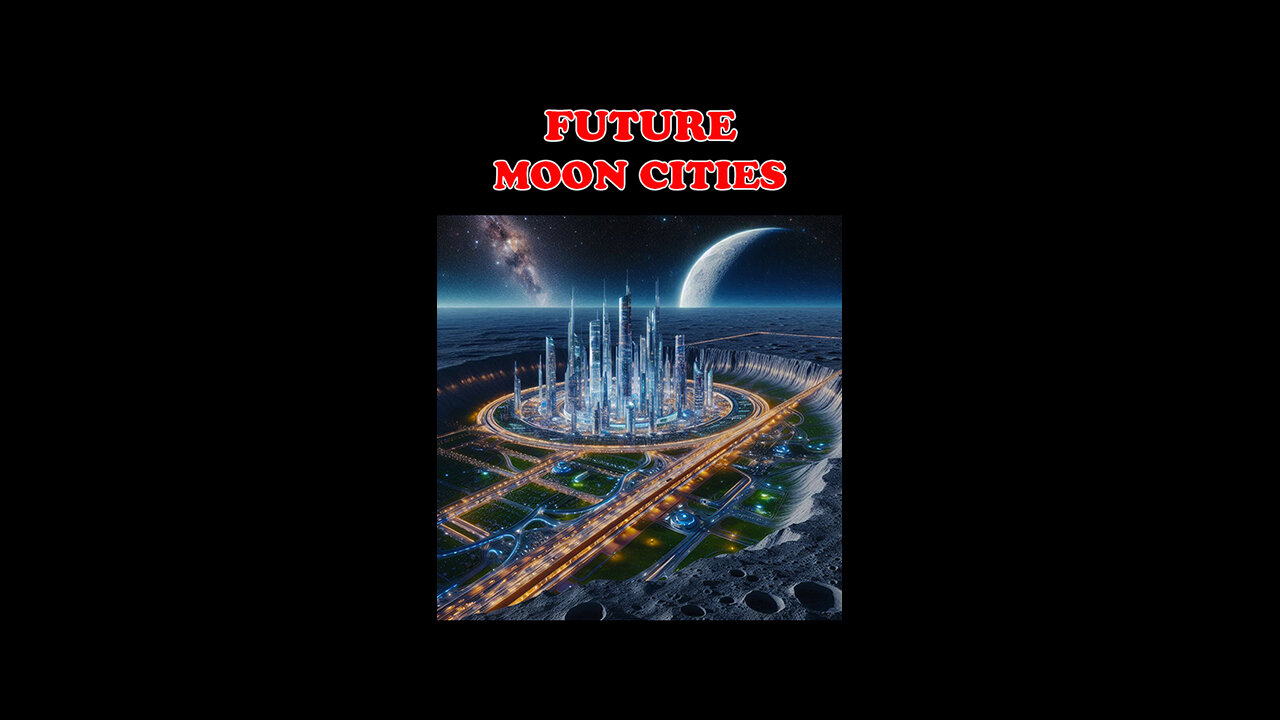Premium Only Content

Futuristic Cities on the Moon?
How would future cities on the moon looks like? Watch this short video clip that answers this question and more.
Grab a FREE Sahara Desert ebook HERE: https://bit.ly/3PePvYU
If you enjoy it, a sub would be awesome!
VISIT US AT: https://panther-ebooks.com/ for superb ebook stories from world renowned authors and other upcoming authors.
FUTURISTIC CITIES ON THE MOON?
Imagine looking up at the moon and seeing a gleaming cityscape, lit by solar panels that stretch for miles, with dome-shaped structures towering on lunar soil. Futuristic moon cities are designed with resilience in mind: translucent domes shielding inhabitants from radiation, temperatures that swing wildly from blistering to freezing, and powerful meteor impacts. Inside, artificial environments support lush greenery and spacious habitats, all connected by tunnels winding under the moon’s crust. Some domes might house high-tech research labs, others luxurious habitats, while transport shuttles connect underground to minimize lunar dust, an abrasive hazard.
Building these cities isn’t just science fiction but a marathon of vision, technology, and immense investment. Experts believe we’re at least 50 to 100 years away from even modest lunar settlements, and the costs could skyrocket beyond $500 billion just for initial setups. Construction would likely be phased, starting with unmanned robots sent to 3D print basic structures using lunar dust and regolith. Autonomous drones and rovers, powered by nuclear batteries, would work for decades to establish foundations. Next comes the challenge of transporting materials, people, and fuel, considering that each kilogram sent to the moon costs roughly $1.5 million.
But the complications don’t end there. The moon has no atmosphere, meaning that builders would need specialized habitats to support workers and sophisticated engineering solutions to shield from cosmic radiation. The psychological toll of isolation, confined spaces, and limited contact with Earth would demand innovative solutions, perhaps through immersive virtual realities, or periodic shifts between Earth and lunar bases. Every facet of these lunar cities, from agriculture to waste management, would have to be self-sustaining.
And then, there's the tech. The cities would depend on solar power, which is only available during the two-week lunar day, forcing us to invent new energy storage systems for the lengthy, pitch-dark lunar night. Solutions like compact nuclear reactors or giant fuel cells could bridge this gap, though each presents technical and environmental hurdles. Transport between Earth and these cities would require more advanced rockets, possibly even space elevators or reusable shuttle systems, to make visits and supplies more frequent and affordable.
In return, these cities could transform humanity’s future. The moon, rich in resources like Helium-3, could be mined to power fusion reactors, creating a cleaner energy source. Research labs there could give scientists a direct look at the universe, free from Earth’s atmospheric interference, sparking innovations in science and space travel. Cities on the moon would be a stepping-stone to deeper space exploration, potentially even providing launch pads to Mars and beyond.
Ultimately, while the vision is grand, the cost, labor, and risks involved in building moon cities are daunting. Such cities will require collaborative efforts among nations, private companies, and perhaps even ordinary citizens willing to crowdfund humanity’s boldest adventure. But if achieved, these lunar metropolises would signify a new era in human history, a permanent reminder of our boundless capacity to adapt, innovate, and venture beyond Earth’s confines.
-
 4:03:01
4:03:01
TheNateVibez
9 hours agoGood Times & Friday Vibes✌ - Fraggin💥- ArmyVet🫡
40.3K6 -
 4:28:12
4:28:12
KataJade
10 hours agoHappy Apex Friday
27.6K1 -
 5:03:59
5:03:59
The tooth entertainment
7 hours agoGears Of War Judgment Livestream lets get to 300 followers #GamingOnRumble
43.2K1 -
 6:49:22
6:49:22
xBuRnTx
12 hours agoHappy Friday Everyone!
31.3K2 -
 2:34:48
2:34:48
Laura Loomer
11 hours agoEP112: MS-13 EVICTED By President Trump
70.1K48 -
 2:53:28
2:53:28
Toolman Tim
9 hours agoCommunity Gaming Night!! | Among Us
37.4K3 -
 2:34:47
2:34:47
GamerGril
9 hours agoMost Dangerous Gril This Side Of The Mississippi
29.5K3 -
 3:44:43
3:44:43
ZWOGs
9 hours ago🔴LIVE IN 1440p! - FiveM Fridays!! GTAV RP!! | Dwindle Digby | - Come Hang Out!
22.8K1 -
 2:05:43
2:05:43
TimcastIRL
11 hours agoTrump Admin Notifies Congress USAID Is CLOSED, Fires EVERYONE, ITS OVER w/Dan Holloway | Timcast IRL
225K169 -
 51:18
51:18
Man in America
15 hours agoClear Skies Coming? States Rally to Ban Geoengineering as RFK Jr. Calls Out ‘Toxic Dousing'
46.4K102